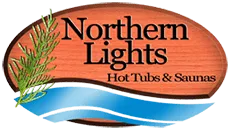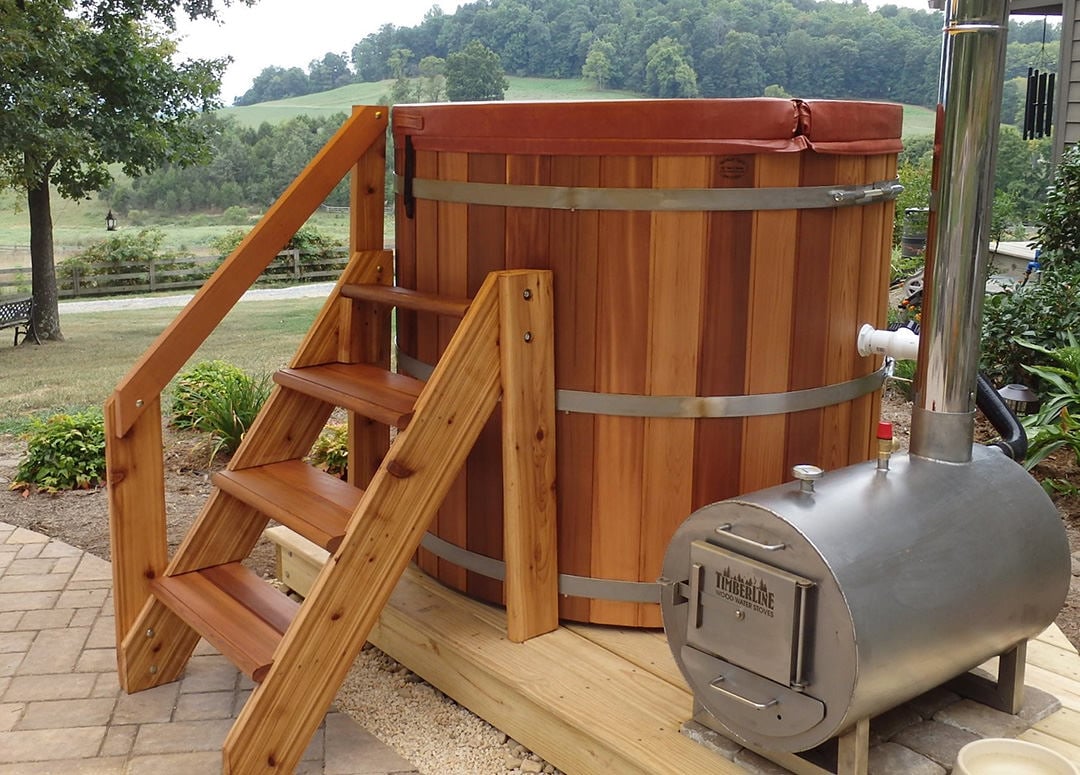Choosing Between Wood-Fired and Electric Hot Tubs
If you’re planning to invest in a cedar hot tub, one of the most important decisions you’ll make is choosing your heating system. The two most popular options—wood-fired and electric—offer very different experiences.
With over 25 years of expertise in crafting premium cedar hot tubs, we’ve helped countless customers weigh the pros and cons of each system. Here’s a detailed breakdown to help you decide which option best suits your needs.
Your Options: Wood-Fired and Electric
Cedar hot tubs can be heated in several ways—gas, solar, heat pump, and more—but for most homeowners, the real debate comes down to wood-fired vs. electric. These two systems deliver distinct experiences in terms of convenience, ambiance, and cost.
Wood-Fired Hot Tubs: The Classic Experience

Advantages
Authentic and Immersive Atmosphere
There’s something timeless about heating your water with a natural flame. The crackling of the wood, the scent of cedar mingling with smoke, and the soft flicker of firelight create a unique, meditative experience. It’s more than just relaxation—it’s a ritual that connects you to nature.
Perfect for Off-Grid Living
If you live remotely or enjoy getting away from the grid, a wood-fired hot tub is ideal. It requires no electricity—just well-seasoned firewood—making it a favorite for cabins, cottages, and eco-retreats.
Sustainable and Renewable Energy Source
Firewood is a renewable resource, especially in forested areas. With access to local wood, your operating costs remain low, and your environmental footprint stays small.
Independence from the Power Grid
During power outages or blackouts, your wood-fired hot tub will continue to operate—no interruptions, no inconvenience.
Disadvantages
Longer Heating Time
Wood-fired hot tub heaters typically take 3–5 hours to reach optimal temperature. This requires advance planning, but many owners find the preparation part of the charm.
Requires Active Maintenance
You’ll need to manage the fire—adding wood, adjusting airflow, and monitoring temperature. Some enjoy this hands-on process; others may prefer a more automated solution.
Storage and Weather Considerations
Adequate space for storing dry firewood is essential, and starting a fire in rainy or windy conditions can be challenging.
Electric Hot Tubs: Modern Comfort and Convenience

Advantages
Effortless Operation
Electric hot tub heaters offer unmatched convenience. Many modern systems can be pre-programmed to heat the water before you arrive home and maintain a consistent temperature automatically.
Quick and Precise Heating
Electric systems typically heat water within 1–3 hours, maintaining it within a single degree of your set temperature. It’s efficient, precise, and easy to control.
All-Weather Reliability
Electric hot tubs perform consistently regardless of the weather—no smoke, no ash, and no environmental restrictions. They’re ideal for urban or suburban areas with fire bans or limited outdoor space.
Disadvantages
Higher Operating Costs
Electricity prices vary by region, but you can expect noticeable increases in your energy bills, especially with frequent use.
Professional Installation Required
Most electric heaters require a 220V/240V connection, often necessitating a certified electrician and possibly new wiring—an added upfront expense.
Dependent on Power Supply
During outages, an electric hot tub will stop operating until power is restored.
Cost Comparison: The Five-Year Outlook
Category | Initial Setup | Annual Cost | Estimated 5-Year Total | ||||||||||||||||||||||||||||||||||||||||||||||||||||||||||||||||||||||||||||||||||||||||||||||||
|---|---|---|---|---|---|---|---|---|---|---|---|---|---|---|---|---|---|---|---|---|---|---|---|---|---|---|---|---|---|---|---|---|---|---|---|---|---|---|---|---|---|---|---|---|---|---|---|---|---|---|---|---|---|---|---|---|---|---|---|---|---|---|---|---|---|---|---|---|---|---|---|---|---|---|---|---|---|---|---|---|---|---|---|---|---|---|---|---|---|---|---|---|---|---|---|---|---|---|---|
Actual costs may vary depending on your region, utility rates, and frequency of use. | |||||||||||||||||||||||||||||||||||||||||||||||||||||||||||||||||||||||||||||||||||||||||||||||||||
Wood-Fired | $1,700–$3,000 (heater, chimney, installation) | $300–$600 (firewood) | $3,200–$6,000 | ||||||||||||||||||||||||||||||||||||||||||||||||||||||||||||||||||||||||||||||||||||||||||||||||
Electric | $1,800–$4,000 (heater, wiring, installation) | $600–$1,200 (electricity) | $4,800–$10,000 | ||||||||||||||||||||||||||||||||||||||||||||||||||||||||||||||||||||||||||||||||||||||||||||||||
Location Matters
Your environment plays a major role in determining which system suits you best:
Wood-Fired Hot Tubs Are Ideal If:
- You live in a rural or forested area with easy access to firewood.
- You’re interested in off-grid or eco-friendly living.
- You experience cold winters and want extra warmth from the fire.
- You face occasional power outages.
Electric Hot Tubs Are Best If:
- You have reliable, affordable access to electricity.
- Convenience and automation are top priorities.
- You live in an area with fire restrictions or space limitations.
- You prefer minimal maintenance and consistent performance.
Why Choose Cedar

Regardless of your heating choice, a cedar hot tub offers exceptional natural benefits. Grade-A cedar provides excellent insulation, helping maintain water temperature efficiently. Its natural oils resist rot and decay, and its flexible structure expands and contracts with temperature changes to maintain a watertight seal.
All cedar used in our tubs is sourced from sustainably managed forests with rigorous reforestation practices—ensuring quality craftsmanship and environmental responsibility for future generations.
Final Thoughts
Your decision ultimately depends on your lifestyle and priorities.
If you value tradition, self-reliance, and the soothing ritual of fire, a wood-fired tub will deliver an authentic and memorable experience.
If you prefer efficiency, comfort, and convenience, an electric system offers modern simplicity with minimal effort.


